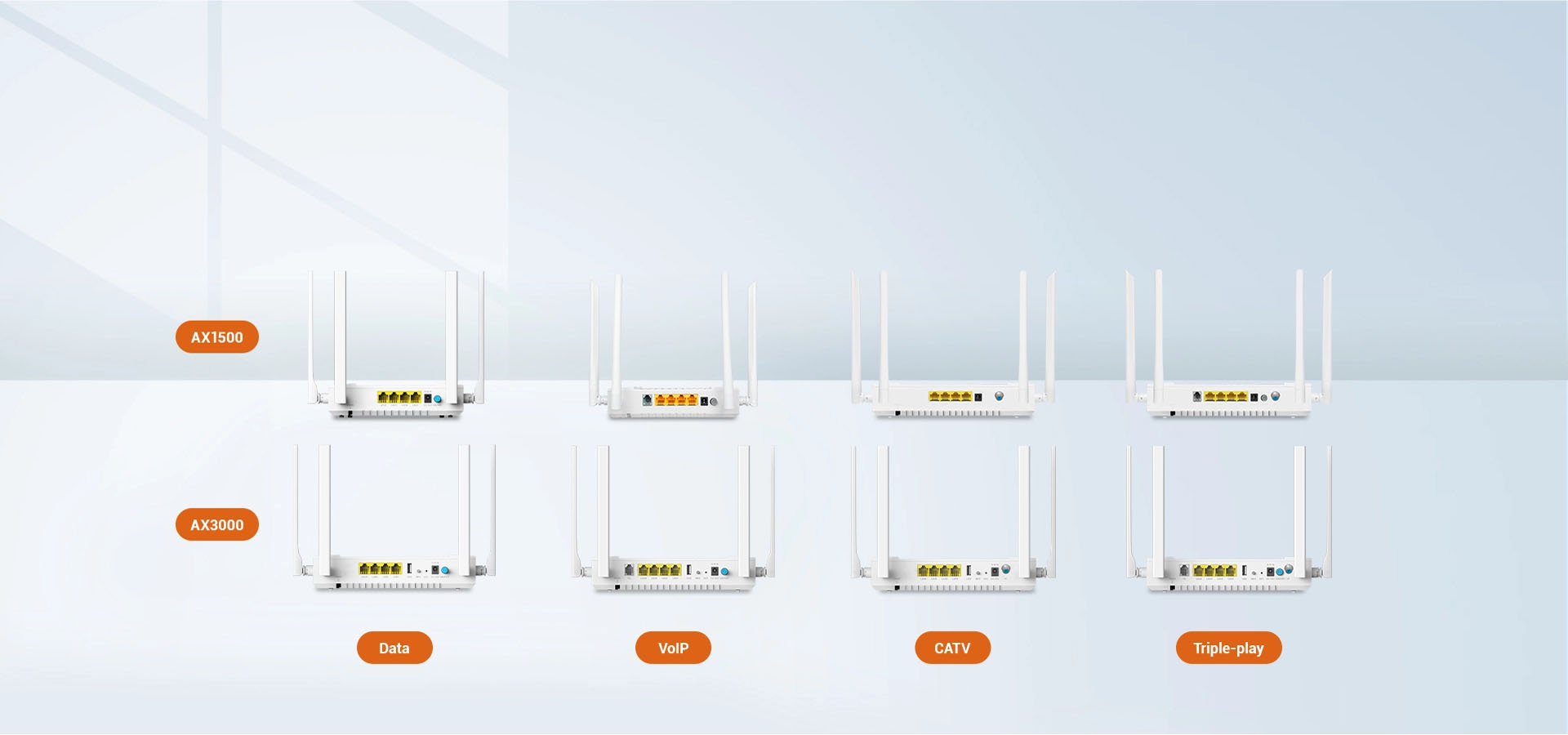In the realm of telecommunications and networking, particularly in the context of fiber-to-the-home (FTTH) or fiber-to-the-premises (FTTP) deployments, Optical Network Units (ONUs) and Optical Network Terminals (ONTs) play crucial roles in facilitating high-speed internet access, voice services, and other communication applications. Despite often being used interchangeably, ONUs and ONTs serve distinct functions within the network architecture. In this essay, we will explore the differences between ONUs and ONTs, including their roles, functionalities, deployment scenarios, and technological aspects.

1. Definitions and Basic Functions:
Let's begin by defining ONUs and ONTs and understanding their fundamental functions:
- Optical Network Unit (ONU): An ONU is a device that resides at the customer premises in a passive optical network (PON). It serves as the interface between the optical fiber network and the customer's premises equipment, such as routers, switches, or computers. ONUs receive optical signals from the central office via the optical distribution network (ODN) and convert them into electrical signals for further processing by the customer's devices.
- Optical Network Terminal (ONT): An ONT is a type of ONU specifically designed to provide a range of services to end-users in FTTH or FTTP deployments. It typically integrates functionalities such as data, voice, and video services into a single device. ONTs serve as the demarcation point between the service provider's network and the customer's premises, providing connectivity for multiple devices and enabling the delivery of various communication services.
2. Deployment Scenarios and Use Cases:
Both ONUs and ONTs are deployed in fiber-optic access networks to enable high-speed broadband connectivity and deliver services to end-users. However, their deployment scenarios and use cases may vary:
- ONUs: These are commonly deployed in PON architectures, where multiple ONUs share the same upstream and downstream bandwidth. ONUs are typically used in multi-dwelling units (MDUs), such as apartment buildings or condominiums, where individual customers require separate connections to the optical network.
- ONTs: ONTs are often deployed in FTTH or FTTP deployments, where a single optical fiber is dedicated to each customer premises. ONTs are suitable for residential homes, small businesses, and other single-user or small-scale deployments requiring a dedicated optical connection and integrated service delivery.

3. Functionalities and Features:
ONUs and ONTs may offer similar functionalities and features, but ONTs often include additional capabilities to support the delivery of multiple services:
- ONUs: These devices primarily focus on converting optical signals into electrical signals for data transmission. Basic ONUs may offer Ethernet interfaces for connecting to the customer's equipment, while more advanced models may include features such as Quality of Service (QoS) management, VLAN tagging, and traffic prioritization.
- ONTs: ONTs typically offer a broader range of functionalities to support various communication services, including data, voice (telephony), and video (television). They may include multiple ports for Ethernet connectivity, telephone interfaces for VoIP services, and coaxial or RF interfaces for delivering television signals. Additionally, ONTs may incorporate features such as Wi-Fi routers, firewall protection, and network management capabilities.
4. Technological Aspects:
ONUs and ONTs rely on similar underlying technologies, such as passive optical networking (PON) and Gigabit Passive Optical Network (GPON) standards. However, there are some technological differences between the two:
- ONUs: These devices typically act as simple optical-to-electrical converters, translating optical signals into electrical signals for transmission over standard Ethernet interfaces. ONUs may support various PON standards, including GPON, Ethernet PON (EPON), or 10G PON, depending on the network requirements and service provider preferences.
- ONTs: ONTs are more complex devices that integrate multiple functions and interfaces to deliver a wide range of services. They may include built-in electronics for voice and video processing, as well as additional features for network management, security, and service provisioning. ONTs must comply with industry standards and specifications to ensure interoperability with different network equipment and service providers.
5. Scalability and Flexibility:
In terms of scalability and flexibility, both ONUs and ONTs offer advantages depending on the deployment scenario:
- ONUs: These devices are typically deployed in scenarios where multiple users share the same optical fiber connection. ONUs offer scalability by allowing service providers to connect multiple users to the same PON infrastructure, thereby maximizing network efficiency and cost-effectiveness.- **ONTs:** ONTs are well-suited for scenarios where dedicated optical connections are required for individual users or premises. They offer flexibility by supporting various communication services, including data, voice, and video, within a single device. ONTs can accommodate the evolving needs of end-users by providing access to advanced services and applications over fiber-optic networks.

6. Conclusion:
In summary, while ONUs and ONTs both play essential roles in fiber-optic access networks, they serve distinct functions and are deployed in different scenarios. ONUs primarily focus on converting optical signals into electrical signals for data transmission and are commonly used in multi-user environments such as apartment buildings or office complexes. ONTs, on the other hand, are more sophisticated devices designed to provide a range of services to individual users or premises, including data, voice, and video. Understanding the differences between ONUs and ONTs is essential for network operators, service providers, and end-users to ensure the successful deployment and operation of fiber-optic access networks.
 The Difference Between AX1800 ONU and AX3000 ONU
The Difference Between AX1800 ONU and AX3000 ONU
 How are Huawei OLTs Classified?
How are Huawei OLTs Classified?
 The Future Trend of Optical Line Terminals (OLTs)
The Future Trend of Optical Line Terminals (OLTs)
 Deployment Requirements of XG(S)-PON Network
Deployment Requirements of XG(S)-PON Network